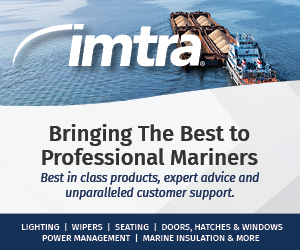Olson: Artificial Intelligence Saves Time But ‘Needs Oversight’

Susan Olson, founder of Action Intel, mentions hockey great Wayne Gretzky when talking about the implementation of artificial intelligence in the workplace.
Gretzky famously said he skates to where the puck is going to be, as actions are moving so fast that if he skates to where it was, it won’t be there anymore.
That’s how fast generative AI is moving, Olson told the West Kentucky chapter of Women in Maritime Operations during an online “lunch and learn” session October 29.
“I find that generative AI is a really helpful tool to give you time back, and it’s something I certainly use every day in a variety of ways,” Olson said.
Examples she gave included using AI for research and writing assistance, marketing, predictive modeling, creating interactive tools to visualize data and assisting with computer coding.
When asked how others have used the technology, one participant volunteered that she likes to upload two different .pdf files and ask AI to note the similarities and differences so she can spot them more quickly. Another said that she has used it to narrow down information available to a specific research focus, such as only those articles focusing on an inland maritime setting, when writing a thesis for her graduate-level college course.
“It has just been a game changer in terms of coding,” Olson said, adding that AI can speed coding and also find errors.
However, she compared AI to an overzealous intern at times, always eager to please, but not always using the care and attention needed. As a result, she said, it is extremely important that humans verify any information generated by AI.
In particular, she said she always validates numerical data that AI generates since it sometimes mistakenly reports information as being in hundreds, thousands or millions. When she tried to get AI to convert bushels to metric tons, it was wrong every time, she said.
It is helpful to think of AI as a digital model that uses probability, she said. Supervision is the key to getting the desired results.
“Maybe it’s supposed to get France, and it gets French’s mustard,” Olson said.
Unexpected results can occur when those wording a query don’t include every step of an operation. An example she gave was when frying an egg, forgetting to include a step where the cook cracks the egg to remove the shell. The results, whether in cyberspace or in real life, can turn out to be unpalatable.
Olson said she routinely “tests” the results of AI by asking information she already knows the answer to at regular intervals, ensuring that AI comes up with the same results. That could include asking AI to generate estimated times of arrival and comparing that information with known data, she said.
Olson words her queries to require source citations and checks those citations to ensure legitimacy. She also includes instructions for AI to ask any clarifying questions needed to perform a query instead of making assumptions.
Salena Lebeouf, president of the West Kentucky WIMOS chapter, asked how much instruction is needed for AI to work correctly. Olson said when using AI for text or code-based answers, she has a rule to try three iterations of instructions to AI and, if the query is still not giving the desired results, using a different method instead.
When it comes to image generation, she said, AI technology is more likely to produce unsatisfactory results, so it can take more time.
Olson discussed benefits and drawbacks of ChatGPT and Claude, an AI chatbot developed by Anthropic, and also spoke briefly about Microsoft AI, which she said she has not used as much yet. She said that for the average layperson, ChatGPT is more “friendly,” and what she called the Swiss Army knife of generative AI, good for a variety of uses. Claude is more scientific and methodical and especially good at coding, she said, noting that it can be “dry.”
Olson led participants through an exercise on using generative AI to conduct research on the importance of Paducah, Ky., to the inland maritime industry, using “## research interests” to focus the query on key components she wanted covered.
She also instructed AI to use deep research mode but to limit the research time to about seven minutes, to provide extensive references within the document and a list at the end and to ask questions before performing the research to make the process efficient and directed to the desired outcome.
“It’s taken what it might take me three or four hours to do and done it in five minutes,” she said of the results.
However, she rated the information provided at about 80 percent accurate, still needing a person to correctly interpret and fine-tune information.
“You’re going to have expertise in these things that it does not know,” she said.
Additionally, she said that while a user can input background documents and reference information into AI platforms to make results more accurate, AI “forgets” some of this information over time.
When asked specifically to think about AI uses for the maritime industry, Olson said that for now she expects AI to become embedded in other technology already being used, working “behind the scenes” to help create new features that will be more readily utilized, such as in email clients or when creating contracts. Additionally, she said, she could see AI being used to integrate information more smoothly to present it in an actionable format, whether that is in the wheelhouse or shoreside.
Those working in maritime industry roles often find they have never-ending “to-do lists,” Olson said. She said AI is already helping her to accomplish those tasks.
“There are things I have to do and things I want to do,” she said. “Now I get more time to do the things I’d rather be working on.”



